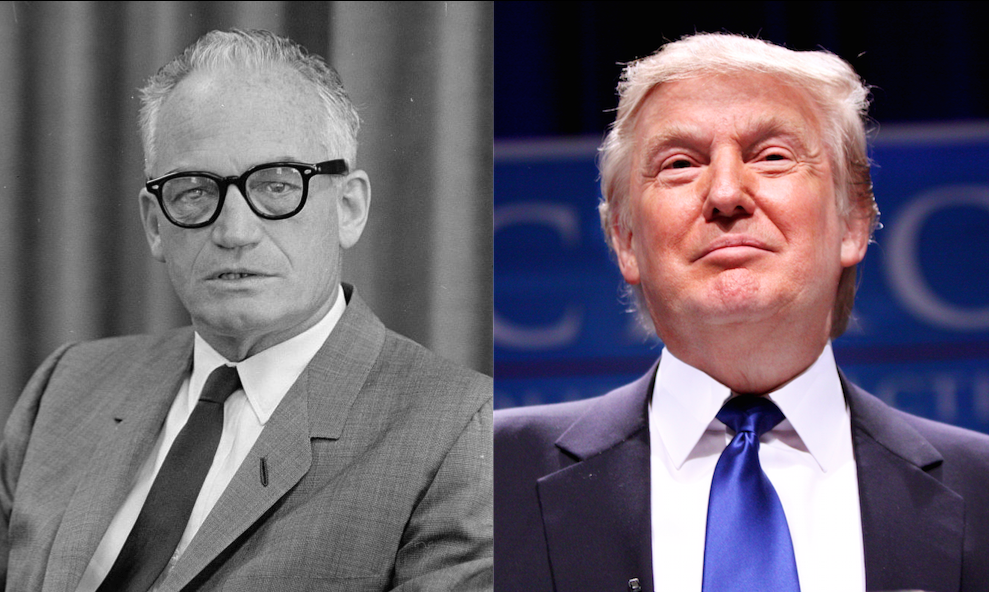What was unthinkable last June is now reality. After staggering losses in the Indiana primary last week, Ted Cruz and John Kasich have dropped from the race for the Republican presidential nomination. With nearly double the delegates of both Cruz and Kasich combined, Donald Trump is the GOP’s presumptive nominee.
Pollsters predict Trump’s likely Democratic opponent Hillary Clinton will keep a lead over him this November. But regardless of whether Trump will win the presidency in the end, the Indiana primary signals a fundamental change of course for the GOP and the American Right. A change, that is, beyond the point of no return.
Analogies of fascist dictators such as Mussolini have tried to explain Trump’s rise. These might be tempting, given the tycoon-turned-politician’s calls for a ban on Muslim immigration, a wall between the U.S. and Mexico, and friendlier ties with Putin and the Chinese Communist Party. Yet the fascism analogy only goes so far: unlike Mussolini or Franco, Trump has worked within, rather than outside, the American democratic system. There’s a more meaningful comparison to be made, much closer to home.
Remember Barry Goldwater?
Not many would. After all, the Republican nominee lost by a landslide to Democrat Lyndon Johnson in the 1964 presidential election. But Goldwater’s failed campaign redefined the ideological and demographic basis of the Republican Party for decades to come. His fallout was the root of modern American conservatism.
And more than fifty years later, Trump is moving with similar force. Revisiting the story of Goldwater can shed light on the American Right’s new direction.
Before Goldwater appeared in national politics, Republicans had little in common with their successive generations. Most notably, “Republican” did not necessarily mean “conservative” in their time. With the post-war liberal consensus, conservatives had yet to be taken seriously across the ranks of either the Republicans or Democrats. They formed a minority within the GOP itself, where the Eastern Establishment – that is, the liberal “Rockefeller” Republicans who leaned toward moderate pragmatism – held the reins.
Enter Goldwater. From the late 1950s to early 1960s, the “straight-talking” Arizona senator built a conservative following for opposing the Kennedy Administration’s “flexible response” defence strategy and the New Deal. His 1960 book, The Conscience of a Conservative, tied together individual liberty, fiscal conservatism, and strong national defence for a renewed vision of the American Right.
Grassroots conservative mobilization poised Goldwater to run for the Republican nomination in the 1964 election. He stood as an alternative to New York governor Nelson Rockefeller and the Eastern Establishment, whose appeal to Southern and mid-Western Whites, many of whom still voted Democrat, was limited. Rockefeller’s controversial divorce and remarriage in 1963 cut back Republican support for his bid, however, paving the way for Goldwater to take centre stage.
By the end of the Republican National Convention in July, 1964, Goldwater had won the nomination. “Rolling Thunder,” as he was often called, took down the Eastern Establishment and, in effect, his party’s liberal wing.
And so came the Goldwaterites with a new, highly principled conservatism, based on limited government, the free market, and militant anti-communism. A famous line from Goldwater’s nomination acceptance speech set the tone of their arrival: “extremism in the defence of liberty is no vice! And let me remind you also that moderation in the pursuit of justice is no virtue!” The GOP’s days of moderate pragmatism were short-lived.
Yet few predicted a conservative such as Goldwater could lead a sincere and committed political movement, let alone take the helm of the GOP. Historian Richard Hofstadter pointed to Goldwater Republicans in his famous 1964 essay, published in Harper’s, on the “paranoid style” of American politics: “heated exaggeration, suspiciousness, and conspiratorial fantasy.”
Indeed, Goldwater’s aggressive anti-Soviet foreign policy, which rejected negotiation in favour of militarized defences and NATO signing power on nuclear weapons deployment, looked reckless to moderate and left-leaning Republicans. His strategy of courting Southern Whites by resisting civil rights reforms under the “states’ rights” banner drove Blacks to support the Democrats en masse – a racial divide that persists today.
In the end, Goldwater lost the presidency to Johnson. He suffered one of the most crushing defeats, at 44 states to six, in American electoral history. But, more importantly, his abject failure sent the intensely divided GOP to rebuild itself for party unity. Though the party purged many of its high-level Goldwaterites shortly after the election, for decades to come it would embrace Goldwater’s conservative vision: limited government, the free market, and strong national defence. Even the politics of Ronald Reagan, one of the foremost Republican Presidents, is traceable back to this juncture.
The 1964 election and Goldwater’s “conservative capture,” as Mary Brennan calls it, were among the most consequential events for American political development. What, then, do they tell about Trump and today’s GOP?
Put simply, Trump and Goldwater parallel each other in that both went radically against the grain of Republican elites, yet stood, or now stand, a real chance of elected office. Before the Indiana Primary, commentators from both the Right and Left widely dismissed Trump’s political potential. His demagoguery, sound-bite rhetoric, and scapegoating of Muslims and undocumented migrants made him hardly presidential material in their eyes. But, one by one, every other Republican hopeful fell to Trump’s swelling popularity. His bid was not so frivolous after all.
Much like Goldwater conservatism over fifty years ago, Trumpism, a mix of nativism, economic populism, and “America First” neo-isolationism, strays away from the conventional GOP brand. Just as Goldwater undercut the Eastern Establishment and its moderate pragmatism, Trump has run afoul of GOP elites today: the elected representatives, donors, lobbyists, and think tank members who much prefer the likes of Bush, McCain, and Romney.
In particular, the Indiana Primary saw Trump overcome the GOP’s social conservative bloc, with Cruz’s exit from the race. Trump has enjoyed a lead even among White Evangelicals, from whom Cruz, given his “religious right” leanings, should have drawn his main support. Meanwhile, the resignations of Kasich after Indiana and Jeb Bush in February ruled out the chance for “compassionate conservatism,” widely associated with the Bush Administration, to offset Trump’s antagonism.
Key to Trump’s success, then, has been his ability to channel the anger of alienated Republican voters. While his core supporters have been working-class, less educated, non-Evangelical White men, Trump has come to lead in most other segments of the Republican base too. What’s common across these categories is frustration: a sense among Republican voters that little has improved for them economically or socially post-recession, neglected by the party establishment thus far. Their fervor resembles that of the Goldwater conservatives, who, amid the liberal consensus, had been left to the margins too long.
That support for Trump reaches across the GOP rather than solely its ‘outskirts’ shows just how fundamental the party’s change in course has been. Whatever the outcome of this November’s election, GOP leadership must rethink what it means to be Republican in 2016. The frustration and alienation driving Trump’s rise can no longer be ignored.
And here, then, is Goldwater’s principal lesson: whether Trump wins the presidency or not, his transformation of Republicans and the Right, like that of his Arizona predecessor, could last for generations.
Left: Barry Goldwater, 1962. U.S. News & World Report Collection at Library of Congress. Public domain.
Right: Donald Trump at Conservative Political Action Conference, 2011. By Gage Skidmore via Wikimedia Commons, CC BY-SA 3.0.
Disclaimer: Any views or opinions expressed in articles are solely those of the authors and do not necessarily represent the views of the NATO Association of Canada.




